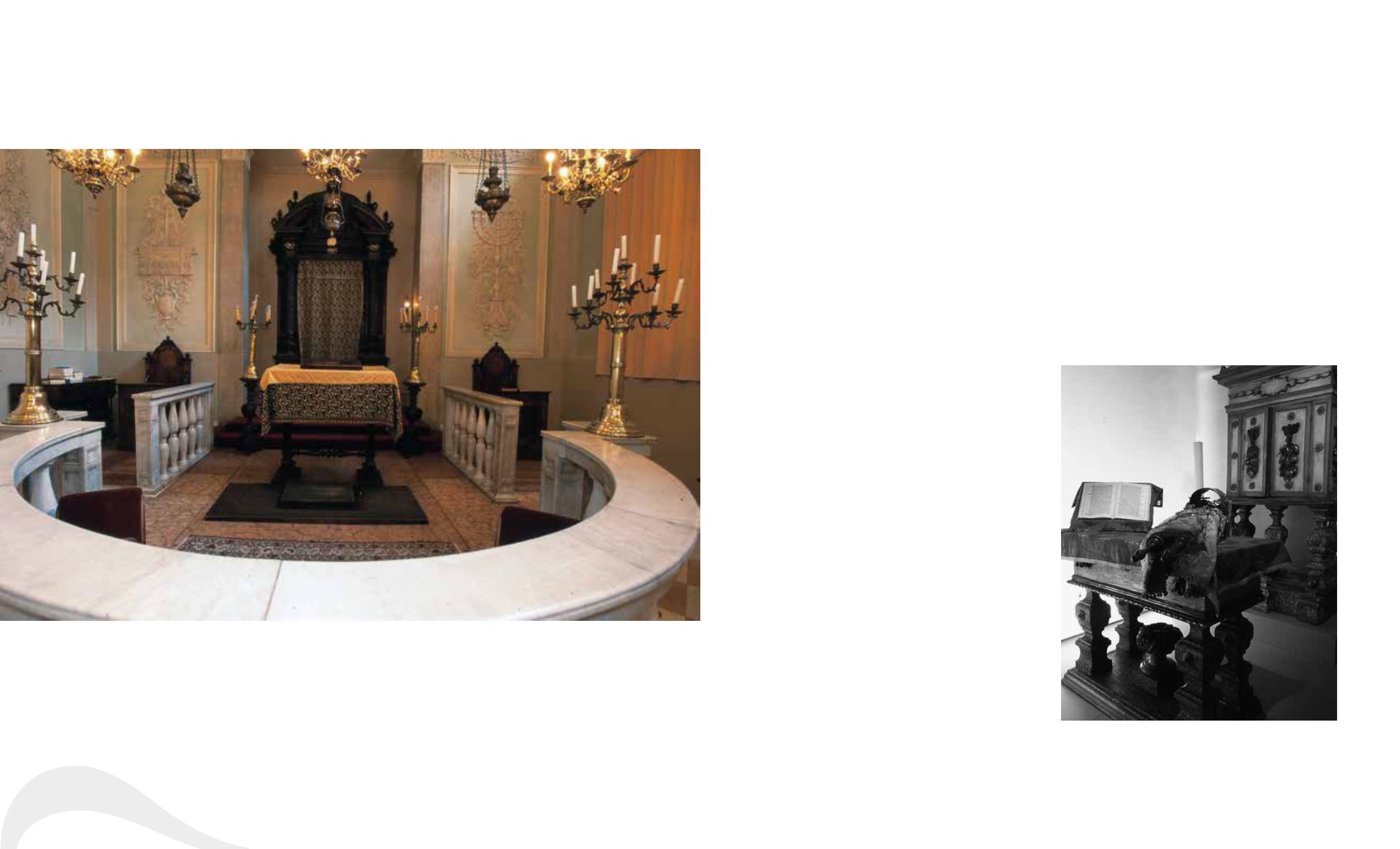
Synagogue
The synagogue,
bet haknesset
, is the place
where Jews come together to pray and
study the Torah. Indeed, to be defined as
such, a Jewish place of worship must hold
at least one
Sefer Torah
(the “Book” of the
Torah).
The Torah scrolls are contained in the
aron
haKodesh
(the holy ark), generally located
against the eastern wall of the synagogue,
facing toward Jerusalem. The name derives
from the Ark of the Covenant which held
the stone tablets of the Law.
Opposite the
aron
stands the
bimah
or dias
from which the ministrant officiates prayers.
In many Italian synagogues, the
bimah
is located in the center of the room, but
sometimes it is set against the wall facing
the
aron
, thus creating an independent
focal spot to draw attention during the
prayers.
Adorned in fabric, the
bimah
is the place
from which the Torah is read on the
Shabbat
and on holy days.
Opposite the
aron
is the
ner tamid
or eternal flame, a lamp most likely
symbolizing the flame in the Temple in
Jerusalem that was to be kept burning
“from evening to morning before the
LORD”.
In the Diaspora the fulcrum of Jewish
cultural life were the synagogues, which
were subject to, and governed by, the laws
of the land. Throughout Italy, and even in
Ferrara, until equal rights were granted to
the Jewish minority, such buildings could
bear no external symbols indicating the
presence of a Jewish place of worship
inside. The façades of buildings housing
the synagogues are thus anonymous, only
upon entering can one admire their beauty.
Interior, Scola Tedesca (German Synagogue), 1603, Ferrara
Furnishings from the Synagogue of Cento
(
aron
,
bimah
and candelabra), XIX century, Cento, painted wood
carved with plant motif
10
11


